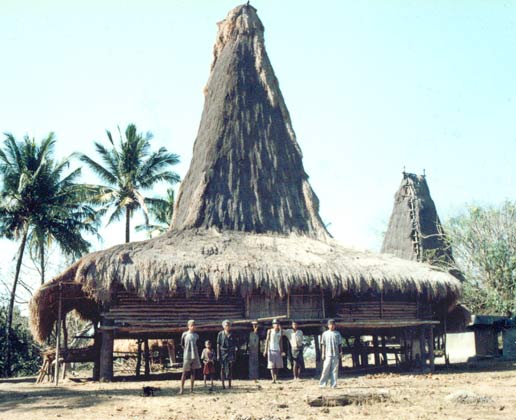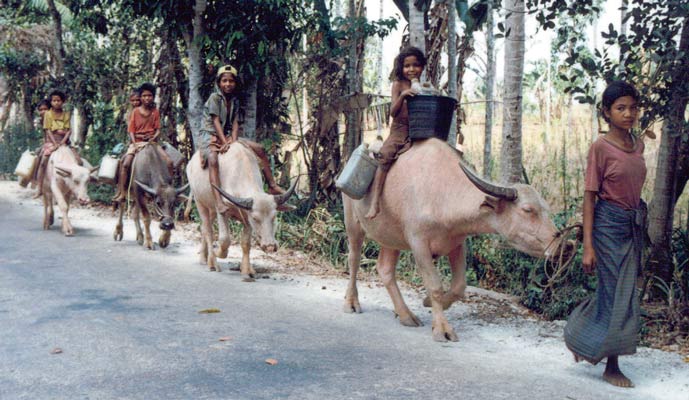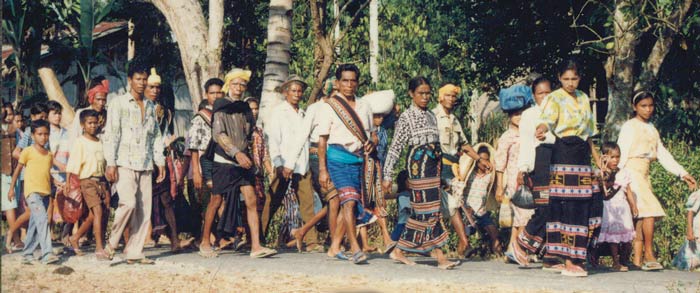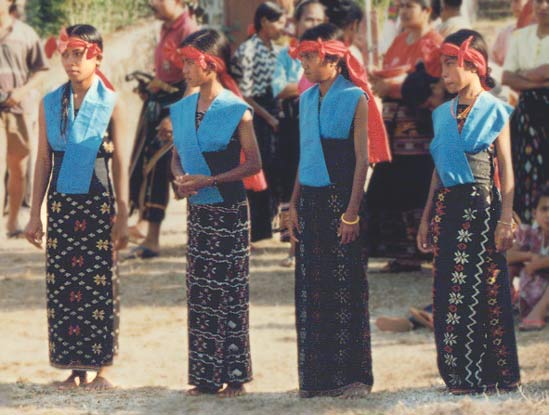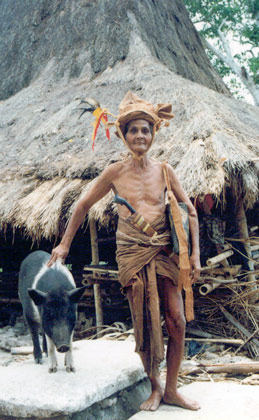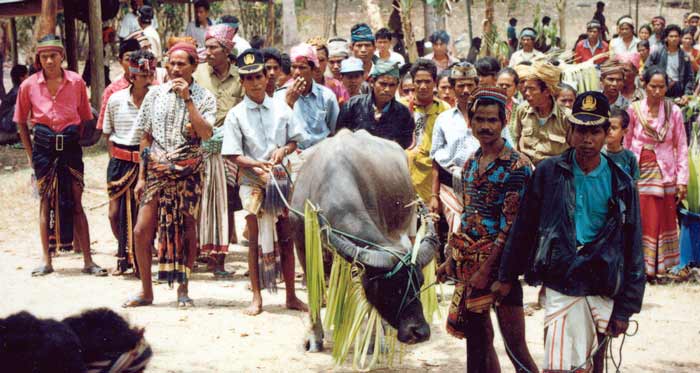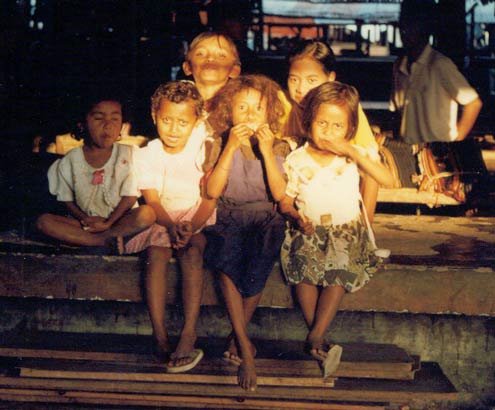Even for a diverse country such as Indonesia, Sumba is different. Lying south of the volcanic arc of islands that stretches from Flores to Sumatra it is neither volcanic or moistly tropical. It is fairly flat and dry. It is also relatively sparsely populated. A result no doubt of it being very popular as a source of slaves over the centuries. Even in the 20th century, the Dutch resident was offered a slave girl upon his arrival. No such offering for me. There wasn't even anyone at the one hotel to offer me a room until eventually someone showed up and managed to find a room key. My guide book told me the town (and capital), Waikabubak had a population of 25,000. While wandering the streets on that first day I saw a few dozen at most along with a few scabby dogs. I did however manage to find someone willing to rent me his motorbike and so I was soon off exploring the island. Despite my low key arrival, I had a wonderful two weeks on Sumba. It is way off the tourist trail but has lots to offer - fine Ikat cloth, megalithic tombs, startlingly high roofed local houses and very friendly and welcoming people.
Sometimes their welcome was a bit too friendly. Apparently it was tradition in these parts that if you were welcomed into a village you had to chew betel nut with the headman. I had seen loads of people chewing and spitting out great glops of the red juice in many places throughout Asia, but never tried it myself. Why not I thought. Soon after I knew why. It had a strangely numbing effect on my mouth and lips and of course it made me produce loads of saliva. The two effects caused me to dribble profusely and deprive me of any control over spitting the stuff out. Very comical for everyone else of course. I quickly learned the Indonesian for 'I'm allergic to Betel nut'
If you click on the camera icon above you will find a collection of photos from my two weeks. You will see the impressive tall roofed houses in which most of the population still live, some of the ancient tombs, someone weaving the Ikat cloth and many people wearing it, lots of pictures of daily life and photos of many processions. Indeed hardly a day went by without one festival or another happening. One such event was the funeral of one of the big chiefs of the island.
I was fortunate enough to be invited to the funeral and to stay in a nearby village. When asking about the deceased I was surprised to be told that I could see him the following day, the day before the funeral. After all not many foreigners come by and he would be very interested to meet me.
So I met the chief and he seemed to be in glowing health. He told me that he was having his funeral now as it was a very expensive affair and why should he miss all the fun? He also couldn't trust his family to stump up the cash for it when he died. Apparently this is the custom for chiefs in these parts. We also talked about this and that and he offered his condolences for my recent loss. When I showed my surprise he told me that his people shared my grief at the loss of one of my royal family, namely Princess Diana. (It was September 1997). This was a common theme whenever I mentioned I was from Britain all the more surprising given that I saw hardly any televisions, newspapers or radios. Only the most educated even spoke Indonesian!
On the day of the funeral, I went to the chief's village. I saw a huge group of men pulling an enormous chunk of rock. It must have been 30 feet long by fifteen feet wide and about three or four feet thick. Tree trunks were being used as rollers and they had been manhandling this slab, to be laid on the chiefs tomb, for many months as it had come from a quarry far away. Standing on top was a very fierce man, with colourful sarong and bandana and an enormous machete in his belt. (All Sumba men have a machete and carry it this way). He was calling out time through a rudimentary sound system. There was also a sail on the slab to help them on their way. This was to be the final day of heaving as they were to pull the slab the final few metres to its eventual resting place.
Every now and then from the village square came music from a small band. This was a signal to stop pulling and to meet another delegation from various local villages. They had come to pay their respects to the chief and to offer presents. These were mainly pigs and buffalos, which were led ahead of the delegation and then ritually slaughtered in the square. There were also a few modern gifts, including a few cartons of cigarettes.
The whole event felt like something out of the pages of National Geographic and aptly enough the only other foreigners present were a Japanese tourist and two Frenchmen claiming to be filming the event for the aforesaid organisation.


